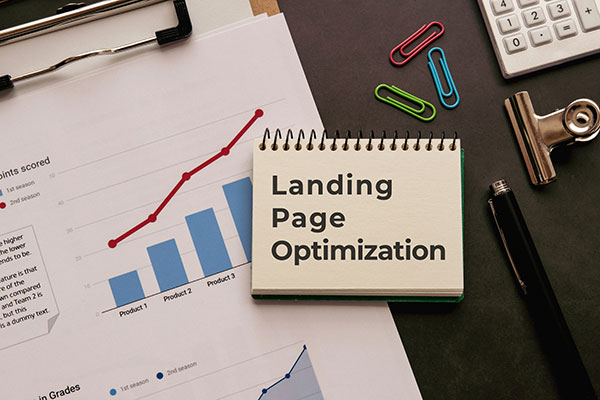Introduction: Why the SEO Funnel Matters
Every business wants traffic. But traffic alone doesn’t pay the bills; leads and conversions do. That’s where the SEO sales funnel comes in. It’s not just about ranking for keywords; it’s about guiding your audience from the moment they discover your brand all the way to the point of conversion.
Whether you’re in healthcare, financial services, or construction, mastering the SEO funnel ensures that your digital marketing efforts translate into measurable business growth. In this guide, we’ll break down what an SEO funnel is, its stages, keyword strategies, and how you can optimize it to capture high-quality leads.
What is an SEO Sales Funnel?
An SEO sales funnel is the structured path that potential customers follow after discovering your business through search engines. It combines keyword targeting, content strategy, and conversion tactics to nurture visitors from awareness (TOFU) → consideration (MOFU) → decision (BOFU).
Unlike a traditional sales funnel, which focuses only on sales activities, the SEO funnel emphasizes search intent. It ensures your content aligns with what people are searching for at each stage of their journey.
Why the SEO Funnel is Essential for Business Growth
Businesses in competitive industries can’t rely on generic marketing. They need precision, the right message, at the right time, to the right audience.
- Healthcare: Digital marketing must be HIPAA-compliant while still engaging patients. An SEO funnel helps providers create trustworthy, compliant content that educates patients before they book an appointment.
- Financial Services: Trust is everything. By targeting funnel-specific keywords, banks and fintechs can drive high-quality applications while maintaining compliance.
- Construction: Long B2B sales cycles demand nurturing. An SEO funnel ensures prospects find localized SEO content at the awareness stage and proof-driven case studies at the decision stage.
The Stages of the SEO Funnel
An SEO sales funnel mirrors the buyer’s journey. Here’s how each stage works:
1. TOFU: Top of Funnel (Awareness)
- Objective: Attract visitors with helpful, educational content.
- Content Types: Blog posts, guides, infographics, explainer videos.
- Example Keywords:
- Healthcare: “How to improve patient engagement online”
- Finance: “Best savings account strategies”
- Construction: “How to generate construction leads”
2. MOFU: Middle of Funnel (Consideration)
- Objective: Build trust and show authority.
- Content Types: Case studies, comparison blogs, webinars, downloadable guides.
- Example Keywords:
- Healthcare: “HIPAA-compliant marketing solutions”
- Finance: “Best digital marketing for banks”
- Construction: “Local SEO services for construction companies”
3. BOFU: Bottom of Funnel (Decision)
- Objective: Convert leads into customers.
- Content Types: Service pages, free consultations, testimonials, pricing pages.
- Example Keywords:
- Healthcare: “Healthcare marketing agency near me”
- Finance: “Financial marketing firm with compliance expertise”
- Construction: “Construction digital marketing agency”
Keyword Funnels: Connecting Search Intent with Funnel Stages
Keywords are the fuel that powers your SEO funnel. To capture users at each stage, you need to map search intent to funnel stages.
Here’s a simplified keyword funnel example:
| Funnel Stage | Search Intent | Example Keywords | Content Type |
| TOFU (Awareness) | Informational | “What is an SEO funnel?” | Blog posts, guides |
| MOFU (Consideration) | Commercial | “Best SEO funnel strategies” | Case studies, comparisons |
| BOFU (Decision) | Transactional | “SEO agency for sales funnels” | Service page, CTA landing page |
Content Marketing Funnel vs. SEO Funnel: How They Work Together
Many marketers confuse the content marketing funnel with the SEO funnel — but they’re deeply connected.
- The SEO funnel focuses on how people find your content (keywords + search intent).
- The content marketing funnel focuses on how your content nurtures and converts those visitors.
When combined, they create a powerful growth engine. For example:
- A blog post optimized for TOFU keywords attracts readers.
- A case study linked from that blog moves them into MOFU.
- A landing page with a free consultation CTA drives BOFU conversions.
This integrated approach ensures your traffic flows seamlessly from discovery → engagement → action.
Funnel Optimization Strategies
Building an SEO funnel is one thing, optimizing it for conversions is where the real results happen.
1. Smart Internal Linking
Guide users naturally through funnel stages. A blog should link to a case study, which links to a service page.
2. Conversion-Focused Design
Use clear CTAs, forms, and trust signals (testimonials, certifications, compliance badges) on MOFU and BOFU pages.
3. Content Repurposing
Turn a blog into a video, infographic, or LinkedIn post. Different formats appeal to different buyer personas.
4. Tracking and Analytics
Use tools like Google Analytics, Semrush, and Search Console to measure funnel performance:
- TOFU → Track traffic and impressions.
- MOFU → Track engagement (downloads, webinar sign-ups).
- BOFU → Track conversions (leads, calls, applications).
Industry Case Studies: SEO Funnel in Action
Healthcare Example
A treatment center optimized blog content for TOFU keywords like “addiction recovery program benefits”. By linking those blogs to MOFU guides and BOFU landing pages, they increased leads by 375% while staying HIPAA-compliant.
Financial Example
A regional bank implemented a keyword funnel targeting TOFU queries like “how to improve credit score”, then guided visitors to MOFU comparisons and BOFU application pages. Result: 183+ new applications and a 4x marketing budget increase.
Construction Example
A mid-size construction firm leveraged localized SEO funnels, ranking for TOFU terms like “home remodeling trends”, and moved users into MOFU through project case studies. Within a year, they drove $10M in new revenue.
FAQs
- What is the SEO funnel?
The SEO funnel is a strategy that aligns keyword targeting and content creation with the buyer’s journey, from awareness to decision.
- How does the SEO funnel connect to sales?
It ensures your traffic doesn’t just stop at clicks. Instead, visitors move through stages of trust-building content until they become leads and customers.
- What are the stages of the SEO sales funnel?
TOFU (Awareness), MOFU (Consideration), BOFU (Decision).
- How do you optimize a keyword funnel?
By mapping keywords to funnel stages, linking content strategically, and using analytics to track conversion paths.
Conclusion: Turning SEO Into a Conversion Engine
Ranking on Google is only half the battle. Without a structured funnel, valuable traffic slips away. The SEO sales funnel transforms search visibility into measurable growth, ensuring every click has the potential to become a lead or customer.
If you’re ready to turn your SEO into a conversion machine, BSPKN Directive is here to help. Our industry-specific strategies in healthcare, financial services, and construction deliver measurable ROI while respecting compliance and trust.



